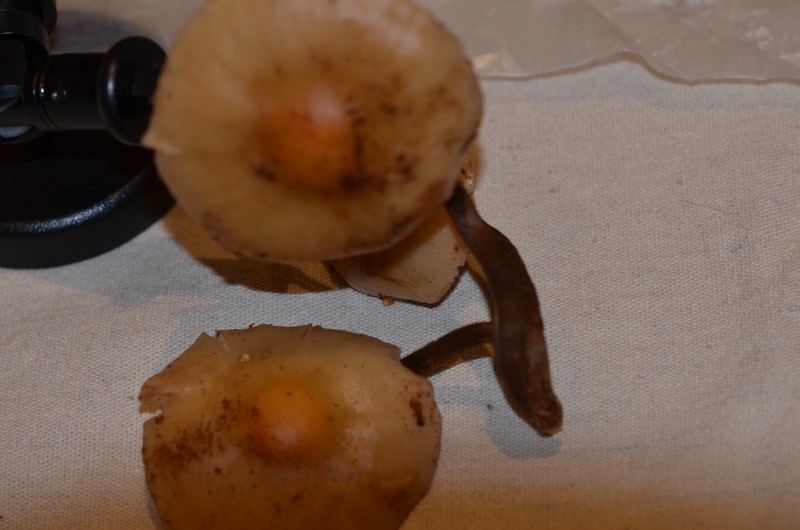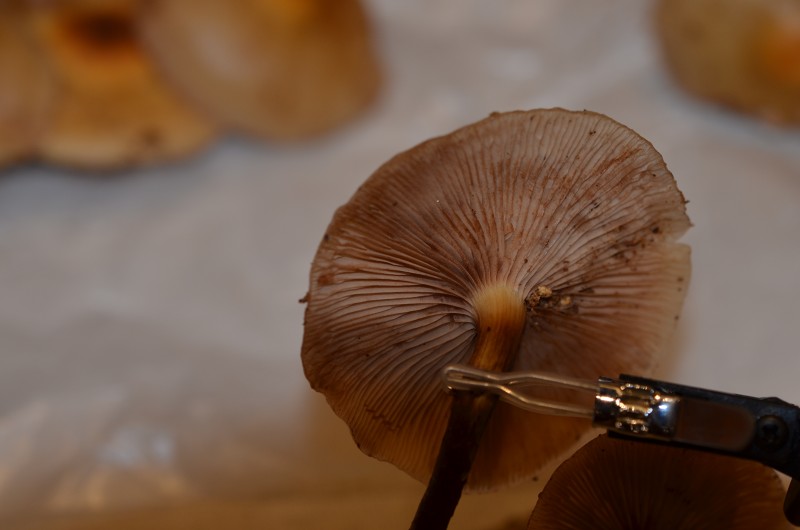Macrolepiota procera
Also called:
parasol mushroom
Comment from Sava: We don't have Macrolepiota procerain PNW. Our shaggy parasols are all in the genus Chlorophyllum; my bet for the one in the picture is C. brunneum. (http://nature.berkeley.edu/brunslab/ev/CHLOROPHYLLUM.pdf)
Wikipedia says: Parasol mushrooms have "a large, prominent fruiting body resembling a parasol. It is a fairly common species on well-drained soils. It is found solitary or in groups and fairy rings in pastures and occasionally in woodland."
Mushroom Expert.com says: "The Parasol Mushroom is one of the more distinctive members of the Lepiota family. Defining features include the little bump in the center of the mature cap; the brownish scales; the slender (not swollen) stem that is covered with small brownish scales; and the distinctive, double-edged ring, which slides freely up and down the stem. The flesh, when sliced and exposed to air, does not turn orangish or pinkish, and the stem does not bruise yellow or reddish when rubbed."
Rogersmushrroms.com says:
"Cap 10–25cm across, button spherical or egg-shaped expanding flattened
with a prominent umbo, pale buff or grey-brown covered in darker shaggy scales.
Stem 150–300´8–15mm, 40mm at the bulb, white, with a grey-brown felty covering
which becomes split into snake-like markings as the stem expands; ring large,
double, white on upper surface, brown below, movable on the stem. Flesh thin, soft, white. Taste sweet, smell slight, indistinctive. Gills free, white. Spore print white. Spores ovate with a germ-pore, dextrinoid, 15–20´10–13m.
Habitat in open woods and pastures. Season summer and autumn. Uncommon. Edible – excellent.

